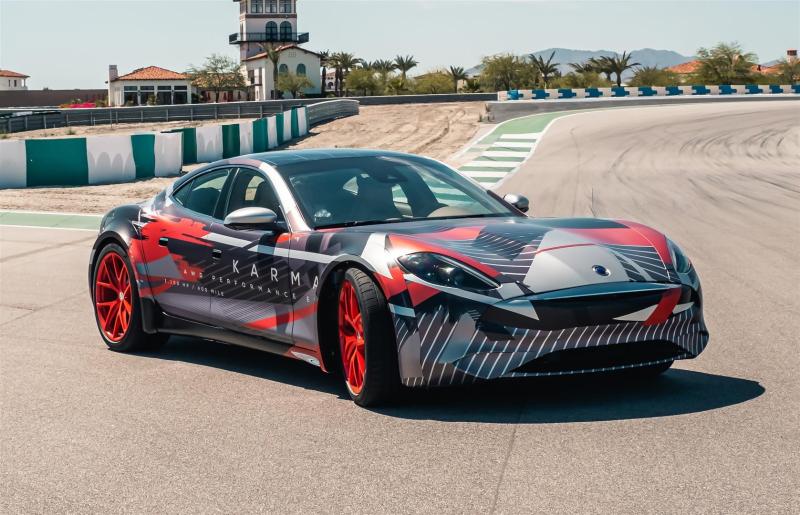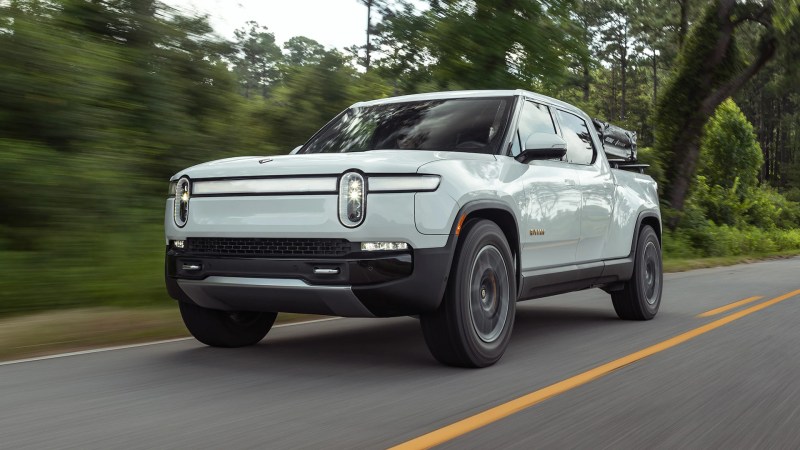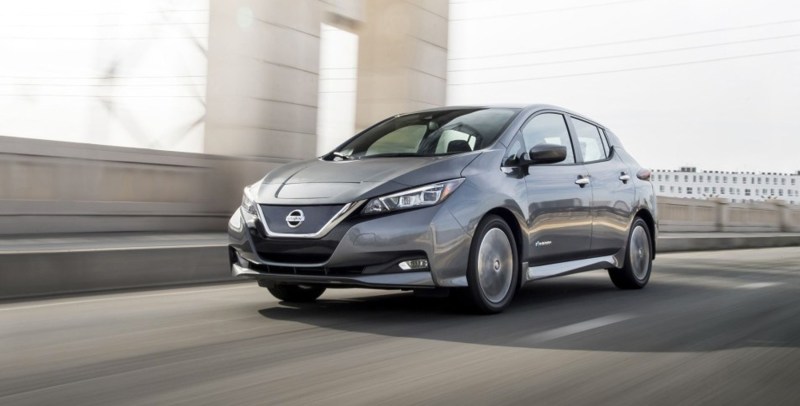Sports Car Performance Tests – Car performance is the study of the movement of a car. The motion of any machine depends on all the forces and moments acting on it. These forces and moments are, for the most part, the interaction of the vehicle with the surrounding medium(s) such as air or water (such as static and dynamic fluid forces), the pull of gravity (the force of gravity), and the ground surface (support, ground). , or landing gear propulsion), and energy-consuming devices on board such as rockets, jet engines, piston engines, and propellers (propulsion). Therefore, in order to fully understand the performance problem, it is necessary to study and characterize these interacting forces in some way.
In general, vehicle performance can be evaluated using the following indicators: maximum achievable speed, acceleration time from zero to a certain speed, maximum climbing angle, distance traveled in a given condition, and hydrogen consumption in certain conditions. Specific courses.
Sports Car Performance Tests

All of these attributes must intersect with the evolution of manufacturing through compatibility with Industry 4.0. To achieve this, you must focus on initial design decisions using digitization for faster turnaround times.
Porsche 718 Cayman Gt4 Eperformance Puts Mission R Into Real World Track Testing
Let’s start by looking at some of the key trends in ground transportation that make product innovation important to staying competitive.
First, more than 190 countries have signed the recent Paris Agreement committing to reverse greenhouse gas emissions. About a quarter of emissions come from the transportation industry, and without changes in transportation, this reverse trend will not happen. Stricter regulations are planned for the future, making it difficult for new car designs to be competitive.
Conventional combustion engines alone will not be able to achieve future emissions levels. By improving the performance of current combustion engines, we can achieve goals for the next generation of vehicles. But to overcome these limits, new and innovative ideas must be applied to realize future systems.
One key and innovative technology that will help achieve these goals is vehicle electrification. In the near future, this will be the growth of hybrid electric cars, but by 2025 there will be regions moving towards pure electric cars. This new technology adds new complexity to the design process, further challenging engineers.
Toyota Testing Radical Performance Ev
At the same time, we need to incorporate new innovative ideas, and engineers need to bring these concepts to market quickly, while continuing to reduce cost in order to be competitive.
Technologies such as simulation, 3D printing, and digital twins are recognized innovations in manufacturing. Furthermore, the automotive industry is no exception to applying these technologies to vehicle performance engineering.
The first step in this comprehensive solution is simulation-based design: the idea behind this is that simulation should drive the design. At this early stage of the CAE process, the components of the complex assembly should already be optimized. These optimal configurations can be found through simulation, even if the CAD experts are not CAE experts.
The second step is automatic model building: identifying specific design elements, creating specific network applications, building models, and building connections, in an automated way.
Searching For Bugatti’s Soul In The Modern Day Chiron
The final step is multidisciplinary simulation. CAE analysts must be able to evaluate, improve, and update designs when necessary.
Since engineers, departments, or sometimes companies are typically involved in these three phases, the simulation and data management process is a way to increase the effectiveness of communication between design engineers, CAE generalists, and CAE experts, so that everyone stays on the same page. Design components, CAE process, results, material data, configuration, test results, requirements, etc… For example, if a CAE specialist discovers a design issue, a suggested update and feedback can be sent back to the entire organization.
Successfully managing today’s vehicle design challenges, such as balancing fuel economy, energy efficiency and performance, requires innovative designs that are explored and confirmed digitally and physically.
Reduced emissions, new mobility and market globalization are changing the way manufacturers design, engineer and produce their vehicles. The race to develop self-driving cars is on, and automakers must also focus on developing low-emission vehicles with competitive performance to ensure their brand image in the global market. Vehicle Performance Engineering departments support vehicle programs and vehicle platform managers with simulation, verification, and test-based validation at various stages of vehicle development, from early program through prototype and pre-production registration to test drive performance.
Porsche Boxster Ev Shows Off Electric Performance In Testing Video
Siemens Digital Industries software supports these engineering departments with a model-based development approach that is fully capable of managing mechatronics system complexity. Our multi-attribute solutions allow engineers to numerically explore and virtually confirm a vehicle that balances all of these performance considerations.
Offering a wide range of simulation and testing solutions, as well as engineering services, ETS solutions with Siemens Digital Industries software help you solve difficult design decisions. Leveraging combined testing and simulation to support performance engineering and validation of mechatronic systems based on the digital twin concept – best-in-class model, best-in-class testing or combination – is a key means of providing performance front-loading solutions. Engineering and design right the first time.
As active safety systems become more available and complex, the interactions between these systems and their interactions with passive safety systems pose a major challenge to finding the right balance between them to maximize real-world safety performance.

Siemens offers solutions to improve the safety and performance of ADAS by verifying the behavior generated by integrating active and passive safety systems.
High Performance Maserati Mcxtrema Undergoes Track Testing
Strict fuel economy and emissions regulations place greater emphasis on efficient aerodynamic design. Getting the design right as close to the process as possible will impact not only the overall packaging, but the brand image as well. To achieve more efficiency in the external aerodynamic parts development process, the use of CFD as a tool in evaluating and understanding aerodynamic performance is becoming more important.
Siemens offers best-in-class 3D CFD capabilities to help you understand the aerodynamic impact of design changes as you strive to achieve increasingly challenging performance goals.
The multidisciplinary challenge of developing and validating automated driving functions is growing and shows no signs of slowing down. This requires the design, verification and validation of advanced driver assistance systems (ADAS) and more efficient full-vehicle autonomous driving systems.
Siemens’ integrated, comprehensive solutions support the creation and implementation of mature product development processes that will enable the industry to move autonomous vehicles from concept to reality.
High Performance Car Images Hi Res Stock Photography And Images
Automotive OEMs and suppliers are required to evolve their design processes, combining control and mechanical engineering continuously throughout the development cycle. The closed-loop design optimizes the vehicle architecture and allows early detection of integration problems, before the first prototype is tested.
Siemens solutions enable you to develop successful mechatronic systems that optimize mechanics, electronics and software together as an integrated system.
Dynamic driving is one of the main characteristics that determine the perceived quality of a car. It’s all about comfort, performance, safety and driving pleasure. This is largely due to factors such as stability, agility and drive. As a result of the increasing use of lightweight body structures and electrical and active systems, manufacturers are looking for design solutions to achieve optimal vehicle handling performance.

Siemens helps manufacturers achieve exceptional machine handling performance by integrating testing and simulation throughout the engineering process. Our tools and services allow vehicle manufacturers to ensure that their vehicles have precisely the driving characteristics they desire.
Dasilva Motorsports 2016 Z06 Shop Car Performance Testing
The acoustic, noise and vibration (NVH) performance of a vehicle greatly affects the driving experience and therefore the perception of quality. Influenced by low and zero emission regulations and strategies, vehicle manufacturers and suppliers are looking for design solutions to provide optimal noise, vibration and vibration (NVH) comfort to align with their brand identity.
Integrated NVH and audio solutions from Siemens Digital Industries Software are designed to combine simulation and testing. It allows you to analyze the root causes of noise and vibration problems, optimize vehicles to improve brand image, and increase the perception of quality. Our tools and services help you design from the beginning and prevent costly redesigns later in the vehicle development cycle.
Our durability engineering solutions help you by capturing and analyzing road load data to set realistic durability goals and actually verify strength and durability performance. Our solutions provide a comprehensive durability engineering approach to accelerate time to market, carefully balancing weight, strength and durability to avoid vehicle recalls and meet customer expectations.
While green car concepts are strategic for OEMs and suppliers, drivers still expect driving pleasure. Measures taken to improve energy efficiency must have no impact on key performance such as noise, drivability or ride comfort. The ability to evaluate early in the design and engineering process the impact of system architecture choices on the global energy balance and performance of key features allows design decisions to be made upfront and to preserve time to market.
High Performance Vehicle Hi Res Stock Photography And Images
Siemens Digital Industries offers a unique combination of system simulation, 3D and CFD tools, as well as engineering services, allowing you to find the right balance before a physical prototype even exists. Then, you can digitally explore the physics and control systems behind the machine’s various subsystems to ensure the machine’s power is fully balanced and optimized.
Ensuring a vehicle’s performance in extreme weather conditions is critical to customer satisfaction and driver safety. With the increased number of sensors comes an ADAS requirement that the sensors have peak performance, even with them
Continuous performance tests, browser performance tests, car performance tests, best performance sports car, website performance tests, types of performance tests, network performance tests, high performance sports car, performance sports car, pc tests performance, performance tests, web performance tests
- How to replace windshield wipers: A Step-by-Step Guide - December 24, 2024
- DIY Car Scratch Repair Tips: Expert Advice for Flawless Results - December 23, 2024
- Winter car maintenance checklist: Essential tips for winterizing your vehicle - December 22, 2024







